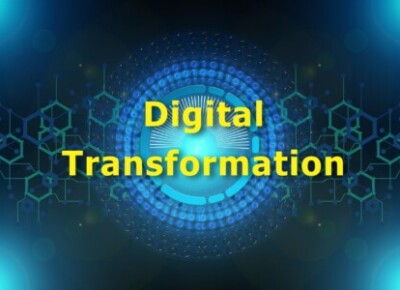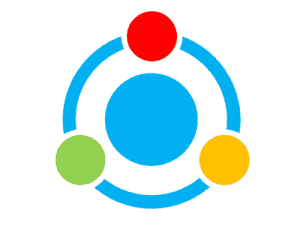Research shows that “need seeker” business cultures are high on the innovation scale. By focusing on customer needs, or solving their problems, you create an innovation culture.
Need Seekers and Innovation
A Need Seeker is a term that PwC’s Strategy& uses in their innovation research. Need Seeker organizations gain deep insight through direct customer engagement. They develop new products and services through that end-user need awareness. Of the customers evaluated for the study referenced here [FN1], the amount of cultural alignment with the innovation approach was a critical success factor.
Business and Innovation Strategies Are Highly Aligned
The study also found that “[o]ver a three-year period, companies that directly captured customer insights had three times the growth in operating income and twice the return on assets of industry peers that captured customer insights indirectly, as well as 65 percent higher total shareholder returns.” [FN1, pg. 8].
Companies that Outperform Their Competitors
Success with innovation strategies has several key components requiring alignment [FN1, pg. 10]:
- A culture that supports the innovation strategy
- Prioritization of the right capabilities
- Alignment of the innovation strategy with the business strategy
- Tools that support the innovation model
“The quality of the alignment of all these elements is the key, and it trumps the amount of R&D spending.”
Innovation with a Split Organization
One of the obstacles to the innovation culture is a lack of organizational alignment for innovation. Accenture’s research from 2015 shows that “72 percent admit that… innovation opportunities often languish because they have no organizational ‘home’ to nurture them.” [FN2] While re-arranging an organization is possible, it is also the tools, leadership support, and additional resources which are needed for success in this type of organization change. Building a split organization provides that home for innovation success.
Organizations that are successful at innovation while maintaining their existing businesses “separate their new, exploratory units from their traditional, exploitative ones, allowing for different processes, structures, and cultures; at the same time, they maintain tight links across units at the senior executive level. In other words, they manage organizational separation through a tightly integrated senior team. We call these kinds of companies ‘ambidextrous organizations,’ and we believe they provide a practical and proven model for forward-looking executives seeking to pioneer radical or disruptive innovations while pursuing incremental gains.” [FN3]
Splitting organizational alignment addresses three of the four key success criteria defined above:
- Create a culture to support the innovation strategy
- Prioritize the right capabilities
- Align the innovation strategy with the business strategy
Making a split organization work requires centralized and supportive leadership, who in turn, provide the right resources, tools, and technologies for success.
“The structure of ambidextrous organizations allows cross-fertilization among units while preventing cross-contamination. The tight coordination at the managerial level enables the fledgling units to share important resources from the traditional units—cash, talent, expertise, customers, and so on—but the organizational separation ensures that the new units’ distinctive processes, structures, and cultures are not overwhelmed by the forces of ‘business as usual.’ At the same time, the established units are shielded from the distractions of launching new businesses; they can continue to focus all their attention and energy on refining their operations, improving their products, and serving their customers.” [FN3]
A Harvard Business School study from 2004 evaluated successful innovation initiatives including 35 attempts at innovation breakthroughs, across 15 business units, and in 9 industries. When launching breakthrough products or services, “[m]ore than 90% of those using the ambidextrous structure succeeded in their attempts, while none of the cross-functional or unsupported teams, and only 25% of those using functional designs, reached their goals.” [FN3]
Success of Split Organizations at Breakthrough Innovation
90%
Making the Innovation Business Model Change
In recent years, CEOs and Boards of Directors have focused on innovation to grow new revenue channels, fend off market competitors, and reduce the risk to their business models. While research into innovation has gone on for several decades, methods to manage innovation and the inherent disruption to the organization have gained some consensus.
Of the successful companies focused on innovation, “90 percent apply emerging technologies to improve or add new features and/or functionality to products and services, and 86 percent apply capabilities such as analytics to optimize their product portfolios.” [FN2]. This focus on customer needs, or the Need Seeker approach to innovation, allows organizations to enhance their existing business models as they focus on providing customers comprehensive solutions.
This focus on the customer (Need Seeker), combined with technology enablers (Digital and Analytics) and a new way of operating, is transforming business. History and research have provided the direction and answers; it is a matter of executing with the right tools. We have developed a solution that enables the transition to the split organization and supports today’s (and tomorrow’s) changing business models.
How Our SAP Solution Enables New Business Models
Focusing on customer solutions requires a broader view than just the organic product portfolio. The key to customer solutions is to meet what the customer is looking for, even if, in some cases, it might be in a competitor’s portfolio. By reselling when necessary and crafting complete solutions, you move from a provider of widgets and generic services to a real partner with your customer.
New revenue channels, new customer acquisition, and customer stickiness arise from holistic customer solutions, which can be enhanced with third-party products or services. Your customers have a need for more data intensive interactions, whether through IoT, integrated analytics, customer-driven demand signals, and other mechanisms to satisfy their needs. This means new business models to support the data, and possibly even supporting X-as-a-Service models. You may need to engage in a variety of business models to create a complete customer solution:
- data subscription services (with usage modeling and tiers),
- data storage services for analytics (more usage modeling and tiers),
- distribution of physical devices or goods,
- periodic consumable product fulfillment,
- white label and branded resell of other vendor products with or without dropshipping,
- bundling with tiers and discounts, etc.
Our pre-configured S/4HANA reference solution includes all of this and much more.
Where customers want to move from Capex to Opex for tangible products, and want to forego the hassle of ongoing maintenance, we have specially developed solutions for Device-as-a-Service. This includes automated and integrated warranty tracking, ability to provide service contracts, input of demand signals for any consumable replenishment, automated asset tracking for the equipment at the customer, and much more. We have a robust, pre-configured solution model to handle the complex processing that many of these new business models require.
Our Pre-Configured S/4HANA Reference Solution Enables Innovation Transformation
These new business models supporting customer solution needs often require recurring billing, complex contracting (which may include products, services, service agreements, SLAs, usage tiers, etc.), and a transformation in your sales organization. Your systems absolutely must support the existing business and the new business models.
One of the challenges we see with larger organizations is the siloed nature of each business unit and their products or services. The multi-BU often requires many individuals, with competing demands and incentives, to complete a sale. Cost of sales is higher than necessary, and the win rate is not as high as it could be. Customers see you as a product or service provider with a large catalog of options, but frequently not as a trusted partner.
Our bundling options meet the revenue reporting accounting requirements while providing the customer bundle with the revenue model they want to see. In a holistic solution, you may provide X or Y product or service free or at some discount, but for internal financial reasons, and fair market value the accounting is allocated differently. No business unit has to absorb a “free” item or a significant discount that is not allocated across the entire solution sale. This creates a culture change with more inter-BU cooperation to package and sell differently. This bundling flexibility solves customers’ problems and leads to more sales deals.
Our S/4HANA pre-configured reference solution allows you to continue existing business and spin-up a separate effort to focus on determining and defining holistic solutions. We enable the ambidextrous sales and delivery organization with the ability to cross-sell different business unit products, services, and even third-party items. This same reference system supports a split organization and has the tools to grow new business through developing new business models. Our S/4HANA pre-configured reference solution also supports the previously mentioned key criteria for success with overlap:
- Create a culture to support the innovation strategy
- Align the innovation strategy with the business strategy
- Use the tools that support the innovation model
As we mentioned, the various tools and solutions allow you to more easily create an innovation culture, and align the innovation strategy with the business. Because our pre-configured reference model is so robust, it allows you to sell nearly anything you can imagine to your customers. You are free to create real customer solutions with your own products, third-party products, and services to support both.
Our S/4HANA solution is especially well adapted to Mergers and Acquisitions. Our bundling, multi-sourcing, and other capabilities are easily extended to new M&As while the full integration is completed. A new company may be treated as a third party, with the immediate sale of their products, while things settle. Our solution, including our development and specialized approach to automating these complex processes, can be retro-fitted to your existing SAP environment, whether you are on S4 or other versions of SAP products.
Contact us today for a demo and better understanding of how our reference system can transform your business model. Our S/4HANA reference platform for your transactions and real-time analytics enable the integration, and simultaneously the separation, you need for a successful business transformation. You will be surprised at the amount of automation and simplification we have developed around these complex processing requirements!
[FN1] Jaruzelski, B., Staack, V., & Goehle, B. (2014). Proven paths to innovation success.
[FN2] Alon, A., Elron, D., and Jackson, L. (2105). 2015 US Innovation Survery: Clear Vision, Cloudy Execution. Accenture https://www.accenture.com/us-en/insight-innovation-survey-clear-vision-cloudy-execution (retrieved January 22, 2019).
[FN3] O’Reilly III, C., Tushman, M. (2004). The Ambidextrous Organization. Harvard Business Review https://hbr.org/2004/04/the-ambidextrous-organization (retrieved January 22, 2019).






